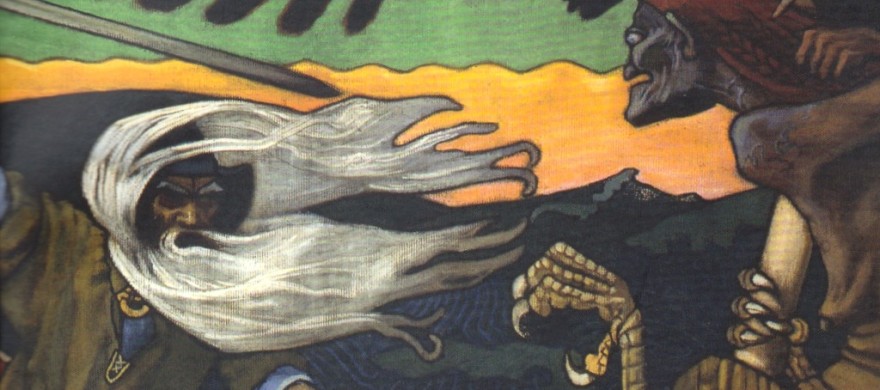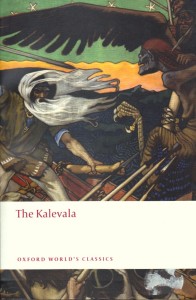Keith Bosley 1989
The Kalevala by Keith Bosley has been published in the Oxford World’s Classics series.
Keith Bosley’s complete translation of The Kalevala from Finnish to English was published in 1989. Bosley (1937–2018), who was a translator and poet, discusses in the introduction how the Kalevala relates to the epic tradition in Europe, starting from the interest in folk culture during the romanticism. He presents the earliest information about Finnish literary sources, compares Finnish folk poetry to folk poetry in other countries, and he also explains typical traits of the Finnish folk poetry as, for example, the alliteration, but he also writes about the schematic form of expression, which is typical for epic poems.
Bosley studies, as other translators have done before him, the work that Lönnrot did when compiling the Kalevala, and he also analyses the Kalevala as a text and a narrative. Bosley says that the Kalevala drifts smoothly between actual epic poetry, lyric poetry, rites and spells. Bosley thinks that it is the rare occurrence of rites and magic in literature that makes the Kalevala interesting, although magic also, on the other hand, tends to be problematic for the modern reader. Thus, Bosley suggests that modernism and its interest in African masks or ethnic music also gives life to the Kalevala and its archaic characteristics.
Bosley also tries to change the original poetic meter to another meter. He notes that at least when the Kalevala meter is translated into English, it is not only monotonous, but it makes the language more contracted and trivial. Bosley emphasises the significant role that humour plays in the Kalevala. In order to be able to express the vivacity of the Kalevala, Bosley came up with his own meter, which is based on syllables and not on metrical foot.
Both Friberg’s (1988) and Bosley’s translations of the poems aimed at making the language of the Kalevala more animated and easier to read. In particular, their aim was to convey its spirit. However, the original poetic meter was replaced with other meters. Thus, both Friberg and Bosley focused primarily on a better translation from a cultural point of view. The translations by Kirby (1907), Friberg and Bosley showed the challenging and multidimensional work that translating the Kalevala was. [See also the article about Kaarina Brooks‘ metric translations from 202o–2021.] Every major translation offered new ways to present and transfer the linguistic and cultural elements of the Kalevala to the English-speaking readers and gave them opportunities to perceive them in more diverse styles.
Cecilia Af Forselles: ”Englanninkieliset käännökset. Kalevalan muuttuvat ylikansalliset tehtävät” – Kalevala maailmalla. Helsinki: SKS. 2012.

